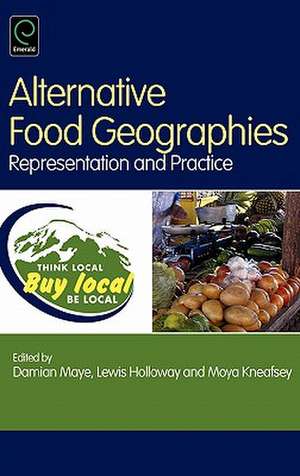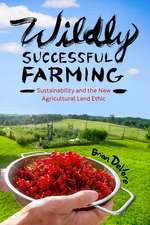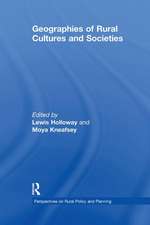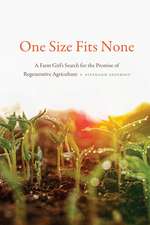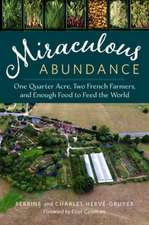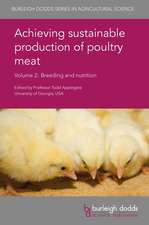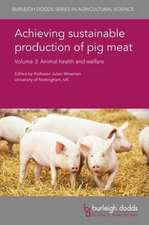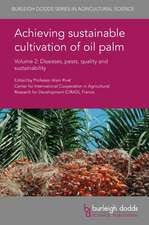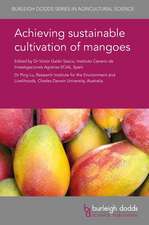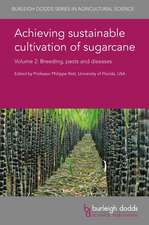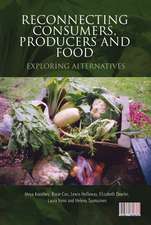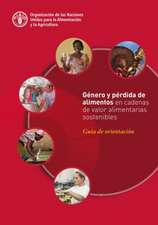Alternative Food Geographies – Representation and Practice
Autor Damian Maye, Lewis Holloway, Moya Kneafseyen Limba Engleză Hardback – 28 iun 2007
This book critically reflects on the great diversity of debates and practices surrounding efforts to reform contemporary food provision in different places and spaces. The book is organized into three parts. Following a contextual introduction written by the editors, Part One focuses on theoretical and conceptual issues/debates, especially in relation to power, representations and discourses of the ‘alternative’. In other words, how, where and why is the term ‘alternative’ deployed? Part Two considers the relationship between public policy and alternative food projects, with case studies that examine some of the ways institutions enroll, represent, support and, in some instances, impede the development of certain forms of alternative food provision. Part Three addresses perspectives and practices from different actors and spaces in the food chain, including producers, retailers, consumers and local communities. Going beyond the usual focus on the global north, the book considers the relevance of debates about ‘alternative’ food networks to the global south. It includes empirically-rich case studies from Europe, North and South America, Australia and Africa, which collectively emphasize the variety of representations and practices involved in constructing ‘alternative’ food geographies.
*Critically examines the efforts to reform contemporary food provision
*Addresses concepts and debates, public policy, and alternative production
*Includes case studies from around the world
Preț: 1122.67 lei
Preț vechi: 1458.01 lei
-23% Nou
Puncte Express: 1684
Preț estimativ în valută:
214.82€ • 224.89$ • 177.75£
214.82€ • 224.89$ • 177.75£
Carte tipărită la comandă
Livrare economică 05-19 aprilie
Preluare comenzi: 021 569.72.76
Specificații
ISBN-13: 9780080450186
ISBN-10: 0080450180
Pagini: 380
Dimensiuni: 168 x 239 x 26 mm
Greutate: 0.7 kg
Editura: Emerald Publishing
ISBN-10: 0080450180
Pagini: 380
Dimensiuni: 168 x 239 x 26 mm
Greutate: 0.7 kg
Editura: Emerald Publishing
Public țintă
Geographers and researchers of in food policy.Cuprins
1.Introducing Alternative Food Geographies
Damian Maye, Moya Kneafsey and Lewis Holloway
PART I
Alternative Food Geographies: Concepts and Debates
2.Localism, livelihoods and the ‘post-organic’: changing perspectives on alternative food networks in the United States
David Goodman and Michael Goodman
3.Connecting social justice to sustainability: discourse and practice in sustainable agriculture in Pennsylvania
Amy Trauger
4.From ‘alternative’ to ‘sustainable’ food
Larch Maxey
5.Beyond the ‘alternative’ – conventional divide? Thinking differently about food production – consumption relationships
Lewis Holloway, Moya Kneafsey, Rosie Cox, Laura Venn, Elizabeth Dowler and Helena Tuomainen
6.Globally useful conceptions of alternative food networks in the developing south: the case of Johannesburg’s urban food supply system
Caryn Abrahams
7.Justifying the ‘alternative’: renegotiating conventions in the yerba mate network, Brazil
Christopher Rosin
8.Is meat the new militancy? locating vegetarianism within the alternative food economy
Carol Morris and James Kirwan
PART II
Public Policy and Alternative Food Projects
9.Regionalisation, local foods and supply chain governance: a case study from Northumberland, England
Damian Maye and Brian Ilbery
10.Governing the speciality food sector: integrating supply chains, sectors and scales in West Wales
Catherine Walkley
11.Public sector food procurement in the United Kingdom: examining the creation of an ‘alternative’ and localised network, Cornwall
James Kirwan and Carolyn Foster
12.‘Bending science to match their convictions’: hygienist conceptions of food safety as a challenge to alternative food enterprises in Ireland
Colin Sage
13.Market-oriented initiatives for agri-environmental governance: environmental management systems in Australia
Vaughan Higgins, Jacqui Dibden and Chris Cocklin
PART III
Practising Alternative Food Geographies
14.From the ground up: California organics and the making of ‘yuppie chow’
Julie Guthman
15.Buying into ‘Buy Local’: engagements of United States local food initiatives
Patricia Allen and Clare Hinrichs
16.Manufacturing fear: the role of food processors and retailers in constructing alternative food geographies in Toronto, Canada
Alison Blay-Palmer and Betsy Donald
17.Networking practices among ‘alternative’ food producers in England’s West Midlands region
David Watts, Brian Ilbery and Gareth Jones
18.The appropriation of ‘alternative’ discourses by ‘mainstream’ food retailers
Peter Jackson, Polly Russell and Neil Ward
19.Sidestepping the mainstream: Fairtrade Rooibos tea production in Wupperthal, South Africa
Tony Binns, David Bek, Etienne Nel and Brett Ellison
Damian Maye, Moya Kneafsey and Lewis Holloway
PART I
Alternative Food Geographies: Concepts and Debates
2.Localism, livelihoods and the ‘post-organic’: changing perspectives on alternative food networks in the United States
David Goodman and Michael Goodman
3.Connecting social justice to sustainability: discourse and practice in sustainable agriculture in Pennsylvania
Amy Trauger
4.From ‘alternative’ to ‘sustainable’ food
Larch Maxey
5.Beyond the ‘alternative’ – conventional divide? Thinking differently about food production – consumption relationships
Lewis Holloway, Moya Kneafsey, Rosie Cox, Laura Venn, Elizabeth Dowler and Helena Tuomainen
6.Globally useful conceptions of alternative food networks in the developing south: the case of Johannesburg’s urban food supply system
Caryn Abrahams
7.Justifying the ‘alternative’: renegotiating conventions in the yerba mate network, Brazil
Christopher Rosin
8.Is meat the new militancy? locating vegetarianism within the alternative food economy
Carol Morris and James Kirwan
PART II
Public Policy and Alternative Food Projects
9.Regionalisation, local foods and supply chain governance: a case study from Northumberland, England
Damian Maye and Brian Ilbery
10.Governing the speciality food sector: integrating supply chains, sectors and scales in West Wales
Catherine Walkley
11.Public sector food procurement in the United Kingdom: examining the creation of an ‘alternative’ and localised network, Cornwall
James Kirwan and Carolyn Foster
12.‘Bending science to match their convictions’: hygienist conceptions of food safety as a challenge to alternative food enterprises in Ireland
Colin Sage
13.Market-oriented initiatives for agri-environmental governance: environmental management systems in Australia
Vaughan Higgins, Jacqui Dibden and Chris Cocklin
PART III
Practising Alternative Food Geographies
14.From the ground up: California organics and the making of ‘yuppie chow’
Julie Guthman
15.Buying into ‘Buy Local’: engagements of United States local food initiatives
Patricia Allen and Clare Hinrichs
16.Manufacturing fear: the role of food processors and retailers in constructing alternative food geographies in Toronto, Canada
Alison Blay-Palmer and Betsy Donald
17.Networking practices among ‘alternative’ food producers in England’s West Midlands region
David Watts, Brian Ilbery and Gareth Jones
18.The appropriation of ‘alternative’ discourses by ‘mainstream’ food retailers
Peter Jackson, Polly Russell and Neil Ward
19.Sidestepping the mainstream: Fairtrade Rooibos tea production in Wupperthal, South Africa
Tony Binns, David Bek, Etienne Nel and Brett Ellison
